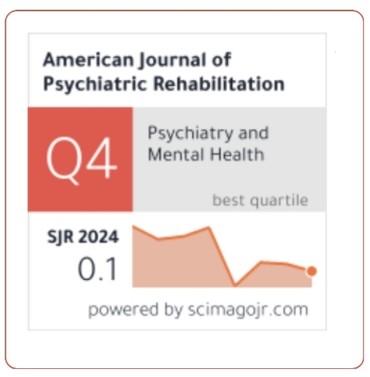Cultural Influences on Chronic Low Back Pain: A Systematic Review with Indian Perspectives
DOI:
https://doi.org/10.69980/ajpr.v28i5.678Abstract
Background: Chronic low back pain (CLBP) contributes significantly to global disability, with prognostic models and clinical prediction rules (CPRs) aiding outcome prediction and treatment tailoring. Adherence to physiotherapy is critical but varies culturally, particularly in India, where kinesiophobia and joint family systems influence outcomes.
Objective: To synthesize evidence on prognostic models, CPRs, physiotherapy interventions, and adherence in adults with CLBP (2000–2025, with relevant 1997–1999 studies), emphasizing Indian perspectives.
Methods: This PRISMA-compliant systematic review searched PubMed, Cochrane Library, ClinicalTrials.gov, and Google Scholar. Studies on CLBP prognosis, CPRs, or adherence in adults were included. Data extraction covered study characteristics, cultural factors, outcomes, and models/adherence. Narrative synthesis and subgroup analyses compared Indian and global contexts. Risk of bias was assessed using NOS, RoB 2, AMSTAR-2, and CASP.
Results: From 470–520 records, 43 studies were included, with 11 prioritized: 5 on prognostic models/CPRs, 3 on adherence, and 3 on both. Mukasa and Sung (2020) (Mukasa & Sung, 2020) reported robust models for LBP onset (Harrell’s C 0.812) and recurrence (0.916). Kongsted et al.(2016) (Kongsted et al., 2016)showed low prognostic accuracy (AUC 0.50–0.61). Indian studies (Vaidya et al., 2023) highlighted kinesiophobia as an adherence barrier. The Enhanced LBP Risk Score Calculator integrates risk prediction, subgrouping, and cultural factors.
Conclusion: Prognostic models and adherence strategies are promising but require validation, especially in India.
References
1. Al-Eisa, E. (2010). Research article Indicators of adherence to physiotherapy attendance among Saudi female patients with mechanical low back pain: a clinical audit.
2. Broonen, J. P., Marty, M., Legout, V., Cedraschi, C., & Henrotin, Y. (2011). Is volition the missing link in the management of low back pain? Joint Bone Spine, 78(4), 364–367. https://doi.org/10.1016/j.jbspin.2010.10.009
3. Childs, J. D., & Cleland, J. A. (2006). Development and application of clinical prediction rules to improve decision making in physical therapist practice. Physical Therapy, 86(1), 122–131.
4. Childs, J. D., Fritz, J. M., Flynn, T. W., Irrgang, J. J., Johnson, K. K., Majkowski, G. R., & Delitto, A. (2004). A clinical prediction rule to identify patients with low back pain most likely to benefit from spinal manipulation: a validation study. Annals of Internal Medicine, 141(12), 920–928.
5. Childs, J. D., Piva, S. R., & Erhard, R. E. (2004). Immediate improvements in side-to-side weight bearing and iliac crest symmetry after manipulation in patients with low back pain. Journal of Manipulative and Physiological Therapeutics, 27(5), 306–313.
6. Darlow, B., Fullen, B. M., Dean, S., Hurley, D. A., Baxter, G. D., & Dowell, A. (2012). The association between health care professional attitudes and beliefs and the attitudes and beliefs, clinical management, and outcomes of patients with low back pain: a systematic review. European Journal of Pain (London, England), 16(1), 3–17. https://doi.org/10.1016/j.ejpain.2011.06.006
7. Fu, Y., Feller, D., Koes, B., & Chiarotto, A. (2024). Prognostic Models for Chronic Low Back Pain Outcomes in Primary Care Are at High Risk of Bias and Lack Validation—High- Quality Studies Are Needed: A Systematic Review. Journal of Orthopaedic & Sports Physical Therapy, 54(5), 302–314. https://doi.org/10.2519/jospt.2024.12081
8. Hayden, J. A., Wilson, M. N., Riley, R. D., Iles, R., Pincus, T., & Ogilvie, R. (2019). Individual recovery expectations and prognosis of outcomes in non‐specific low back pain: prognostic factor review. Cochrane Database of Systematic Reviews, 11. https://doi.org/10.1002/14651858.CD011284.pub2
9. Hazard, R. G., Haugh, L. D., Reid, S., McFarlane, G., & MacDonald, L. (1997). Early physician notification of patient disability risk and clinical guidelines after low back injury: a randomized, controlled trial. Spine, 22(24), 2951–2958.
10. Kent, P., Keating, J. L., & Leboeuf-Yde, C. (2010). Research methods for subgrouping low back pain. BMC Medical Research Methodology, 10, 1–14.
11. Kent, P., Mjøsund, H. L., & Petersen, D. H. D. (2010). Does targeting manual therapy and/or exercise improve patient outcomes in nonspecific low back pain? A systematic review. BMC Medicine, 8, 1–15.
12. Kim, J. G., Park, S.-M., Kim, H.-J., & Yeom, J. S. (2023). Development and validation of a risk-prediction nomogram for chronic low back pain using a national health examination survey: a cross-sectional study. Healthcare, 11(4), 468.
13. Koes, B. W., Van Tulder, Mw., & Thomas, S. (2006). Diagnosis and treatment of low back pain. Bmj, 332(7555), 1430–1434.
14. Kongsted, A., Andersen, C. H., Hansen, M. M., & Hestbaek, L. (2016). Prediction of outcome in patients with low back pain–a prospective cohort study comparing clinicians’ predictions with those of the start back tool. Manual Therapy, 21, 120–127.
15. Mukasa, D., & Sung, J. (2020). A prediction model of low back pain risk: a population based cohort study in Korea. The Korean Journal of Pain, 33(2), 153–165.
16. Page, M. J., McKenzie, J. E., Bossuyt, P. M., Boutron, I., Hoffmann, T. C., Mulrow, C. D., Shamseer, L., Tetzlaff, J. M., Akl, E. A., & Brennan, S. E. (2021). The PRISMA 2020 statement: an updated guideline for reporting systematic reviews. Bmj, 372.
17. Vaidya, S., Limbasiya, R., & Champaneri, S. (2023). Adherence to Key Domains by Indian Physiotherapists in Low Back Pain Clinical Guidelines: A Narrative Review.
18. Wanjau, M. N., Möller, H., Haigh, F., Milat, A., Hayek, R., Lucas, P., & Veerman, J. L. (2023). The Potential Impact of Physical Activity on the Burden of Osteoarthritis and Low Back Pain in Australia: A Systematic Review of Reviews and Life Table Analysis. Journal of Physical Activity & Health, 20(8), 690–701. https://doi.org/10.1123/jpah.2022-0541
Downloads
Published
Issue
Section
License
Copyright (c) 2025 American Journal of Psychiatric Rehabilitation

This work is licensed under a Creative Commons Attribution 4.0 International License.
This is an Open Access article distributed under the terms of the Creative Commons Attribution 4.0 International License permitting all use, distribution, and reproduction in any medium, provided the work is properly cited.









